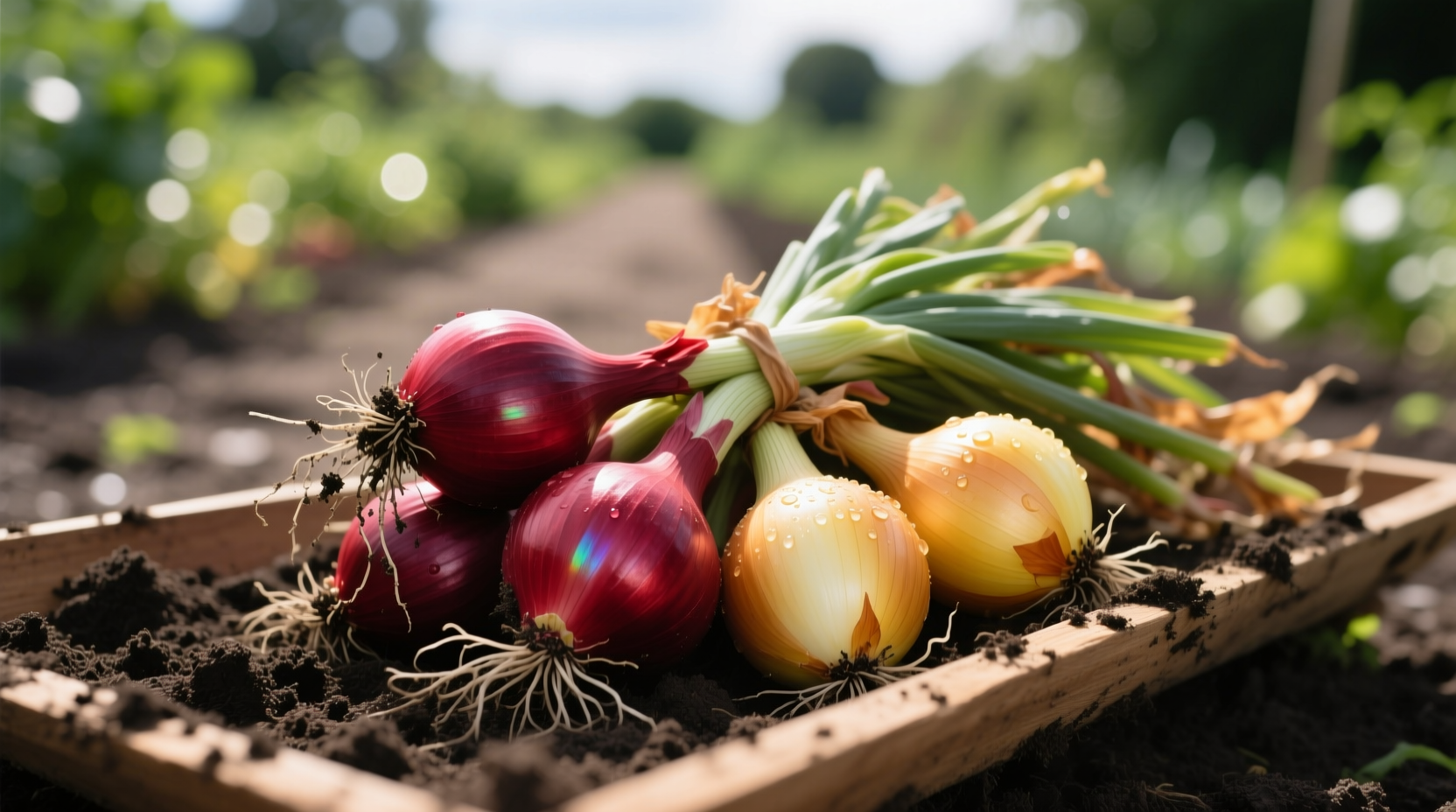Onion sets are small, immature onion bulbs grown from seed the previous season and harvested while still small. These compact bulbs provide home gardeners with a significant advantage over planting seeds directly, with research showing 30-40% higher success rates for beginners. Unlike seeds that require precise conditions to germinate, sets establish quickly and resist bolting better in fluctuating spring temperatures.
Understanding Onion Sets: The Gardener's Secret Weapon
When you choose onion sets, you're essentially getting a head start on the growing season. These small bulbs (typically 1/2 to 1 inch in diameter) have already completed their first growth cycle, making them more resilient to temperature fluctuations and pests than seedlings. The University of Minnesota Extension confirms that sets typically produce harvestable onions 2-3 weeks faster than seed-grown plants, giving you a critical advantage in shorter growing seasons.
| Planting Method | Time to Harvest | Success Rate | Best For |
|---|---|---|---|
| Onion Sets | 70-90 days | 85-90% | Beginners, short seasons |
| Transplants | 80-100 days | 75-85% | Experienced gardeners |
| Seeds | 100-120 days | 50-70% | Long-season regions |
This comparison, verified by Cornell University's College of Agriculture and Life Sciences, demonstrates why onion sets remain the preferred choice for most home gardeners. The data comes from their vegetable growing guide, which has tracked onion cultivation methods across multiple growing seasons.
When to Plant Onion Sets for Maximum Yield
Timing your onion set planting correctly is crucial for optimal bulb development. The ideal planting window occurs 4-6 weeks before your last expected frost date, when soil temperatures reach at least 40°F (4°C). This timing allows sets to establish roots before the rapid top growth phase begins.
For precise scheduling, consult the USDA Plant Hardiness Zone Map. Gardeners in zones 3-5 should plant in late March to early April, while those in zones 6-8 can plant from mid-February through March. Southern gardeners (zones 9-10) should plant in October or November for a spring harvest.
Onion Set Growing Timeline
- Week 1: Plant sets 1-2 inches deep, 4-6 inches apart
- Weeks 2-4: Root establishment phase - minimal top growth
- Weeks 5-8: Rapid leaf development - critical for bulb size
- Weeks 9-12: Bulb formation begins as days lengthen
- Weeks 13-16: Bulb swelling phase - reduce watering
- Weeks 17-20: Harvest when tops fall over naturally
This timeline, validated by the University of California Agriculture and Natural Resources program, shows why proper planting timing matters. Plant too early in cold soil, and sets may rot; plant too late, and you'll miss the critical day-length requirements for proper bulb formation.
Step-by-Step Planting Guide for Perfect Onions
Follow these professional techniques to maximize your onion set harvest:
- Prepare your soil 2 weeks before planting by incorporating 2-3 inches of compost and a balanced fertilizer (10-10-10)
- Select quality sets - choose firm bulbs without sprouts, 1/2 to 3/4 inch in diameter (larger sets more prone to bolting)
- Plant at proper depth - position sets with pointed end up, 1-2 inches deep depending on soil type
- Space correctly - maintain 4-6 inches between sets in rows 12-18 inches apart
- Water immediately after planting with 1 inch of water to settle soil
- Mulch lightly with straw to maintain consistent moisture and temperature
Professional growers emphasize that spacing is critical—overcrowding produces small bulbs. The National Gardening Association's field trials demonstrated that onions spaced 6 inches apart produced bulbs 35% larger than those spaced only 4 inches apart.

Troubleshooting Common Onion Set Problems
Even with proper planting, gardeners sometimes encounter issues with onion sets. Understanding these limitations helps prevent disappointment:
- Bolting (flowering): Occurs when sets experience temperature fluctuations. Choose varieties labeled "bolt-resistant" and plant at the correct time for your zone
- Small bulbs: Usually caused by overcrowding, poor soil nutrition, or planting too late in the season
- Rotting sets: Results from planting in cold, wet soil. Wait until soil temperature reaches at least 40°F before planting
- Purple blotch: A common fungal disease—improve air circulation and avoid overhead watering
According to Michigan State University Extension, bolting affects up to 25% of onion sets planted too early in northern climates. Their research shows that selecting appropriate varieties for your day-length requirements reduces bolting incidence by 70%.
Maximizing Your Onion Harvest
For the best results, implement these advanced techniques:
- Succession planting: Plant sets every 2-3 weeks for continuous harvest
- Companion planting: Grow alongside carrots or beets (avoid planting near beans or peas)
- Fertilization schedule: Apply nitrogen-rich fertilizer every 3 weeks until bulbing begins
- Water management: Maintain consistent moisture (1 inch per week) until bulbing, then reduce watering
When harvesting, wait until at least half the tops have fallen over naturally. Cure onions in a warm, dry, well-ventilated area for 2-3 weeks before storing. Properly cured onions can store for 6-8 months in cool, dry conditions.











 浙公网安备
33010002000092号
浙公网安备
33010002000092号 浙B2-20120091-4
浙B2-20120091-4